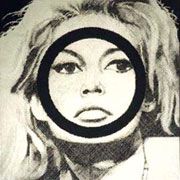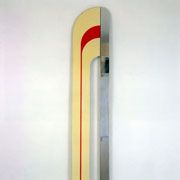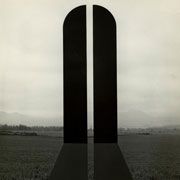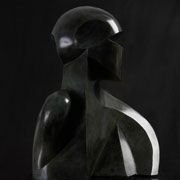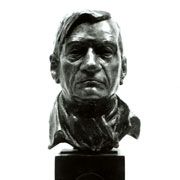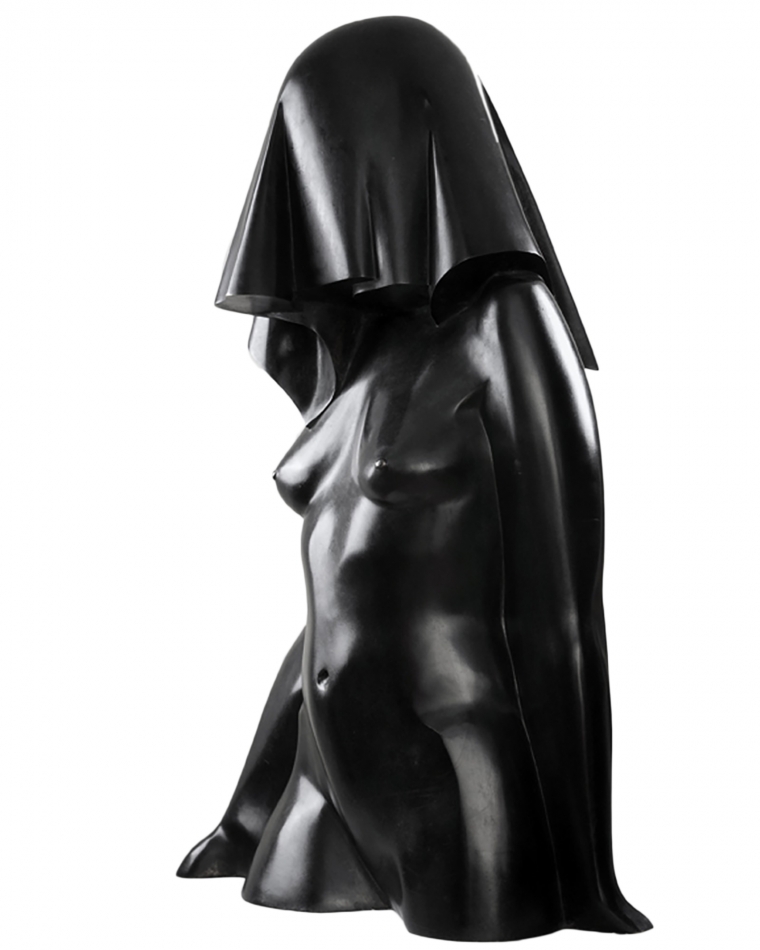
Catalogue Raisonné. Ecce Domina
Search the Catalogue
Ecce Domina
Catalogue No. 395
Artist's CR 371
Summer, 1977
Kinkell
Bronze
Edition of 3
35 x 22 x15 inches / 89 x 56 x38 cm
- An Exhibition of Sculpture by Gerald Laing at the Edinburgh Festival 1978, Gladstone Court, Edinburgh, 1978
- Gerald Laing: Bronze Sculpture, Max Hutchinson Gallery, New York, 1979
- Gerald Laing: Sculpture, Bacardi Art Gallery, Miami, 1982
- An Exhibition of the Hamburg Triptych, 27–29 Blenheim Gardens, London, 1982
- Gerald Laing, 'Gerald Laing', Ambit76, 1976
- An Exhibition of Sculpture by Gerald Laing at the Edinburgh Festival 1978, exhibition catalogue, Gladstone Court, 1978
- Gerald Laing: A Retrospective 1963–1993, exhibition catalogue, The Fruitmarket Gallery, 1993
- Gerald Laing, 'Gerald Laing: An Autobiography', unpublished manuscript, 2011
The Human Condition and Ecce Domina show a more classical spirit in the fullness and harmony of the figure and its self-contained nature in space. Even the separation of the arms from the body is avoided - Ecce Domina has one arm attached to her side, while in The Human Condition both arms and head are encased… It remains to be seen whether Laing has reached a resting-point in The Human Condition at which he may develop its generalizing character into true classicism.
An Exhibition of Sculpture by Gerald Laing at the Edinburgh Festival 1978, Douglas Hall, exhibition catalogue, Gladstone Court, Edinburgh, 1978
A celebration of the triumph of ideal feminine physical beauty. Some people have accused me of misogyny in respect of this work; the first to do so was the Minister of Holyrood Kirk in Edinburgh, who saw it at my exhibition at the 1978 Edinburgh Festival. Carrying a pastoral crook, he swept into the makeshift gallery and announced to the young woman whom I had hired to supervise the exhibition that I was a woman-hater, because I exposed women’s bodies and covered their heads. He failed to perceive that the subject was the power of the female form, which I did not wish to particularise by giving the figure a personal identity. When I heard of his reaction I went down to the Kirk to look for him, but fortunately he was not at home. A clue to the meaning of the sculpture is that I intended it to be the female equivalent of ‘Ecce Homo’ (Behold the Man), which would have been ‘Ecce Femina’; but this has untidy connotations. It was Antonia Fraser who suggested ‘Ecce Domina’ instead - ‘Behold the Lady’.
An Exhibition of Sculpture by Gerald Laing at the Edinburgh Festival 1978, Douglas Hall, exhibition catalogue, Gladstone Court, Edinburgh, 1978

